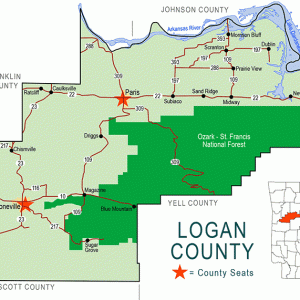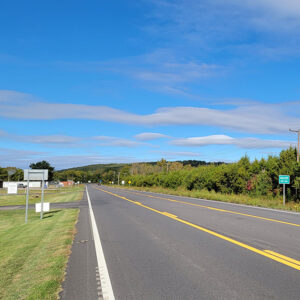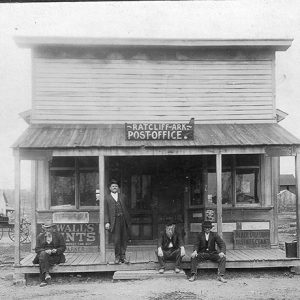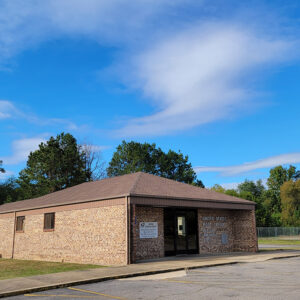calsfoundation@cals.org
Ratcliff (Logan County)
| Latitude and Longitude: | 35°18’30″N 093°53’01″W |
| Elevation: | 420 feet |
| Area: | 1.81 square miles (2020 Census) |
| Population: | 167 (2020 Census) |
| Incorporation Date: | August 2, 1907 |
Historical Population as per the U.S. Census:
|
1810 |
1820 |
1830 |
1840 |
1850 |
1860 |
1870 |
1880 |
1890 |
1900 |
|
– |
– |
– |
– |
– |
– |
– |
– |
– |
– |
|
1910 |
1920 |
1930 |
1940 |
1950 |
1960 |
1970 |
1980 |
1990 |
2000 |
|
175 |
257 |
231 |
337 |
213 |
147 |
184 |
197 |
180 |
191 |
|
2010 |
2020 |
|
|
|
|
|
|
|
|
|
202 |
167 |
|
|
|
|
|
|
|
|
Halfway between Paris (Logan County) and Charleston (Franklin County) on Highway 22, Ratcliff in Logan County has 202 residents as of the 2010 census.
The area that is now northwestern Logan County was sparsely populated prior to the Civil War. Alexander Kannady and Jerry Nunnellee filed papers in Clarksville (Johnson County) in 1861 claiming ownership of the land; Nunnellee is said to have operated a plantation in that area for many years prior to this claim. Early in the 1870s, the area became an attraction due to five natural springs of mineral water that were thought to have healing benefits. Stone pavilions sheltered three of the five springs for the comfort of visitors, and a community called National Springs came into existence. In 1881, with a population of roughly 600 residents, National Springs incorporated. A post office was established that same year, using only the word National for its name. A school district was created the next year for National Springs. The community also had a hotel, a blacksmith shop, three grocery stores, and a newspaper, the National Springs News.
Meanwhile, the Arkansas Central Railroad, which was building a line through the Arkansas River Valley, sought to increase its profits by selling land to German immigrants. The railroad—not to be confused with an earlier line of the same name, connecting Helena (Phillips County) to Clarendon (Monroe County)—was incorporated in 1897 to reach the coal-mining areas of western Arkansas. Subiaco Abbey was established in 1877, and the Benedictines of the abbey set up mission churches along the railroad. St. Anthony’s Church, near National Springs, was the third mission created by the abbey.
When the railroad was completed, the depot was a few miles from National Springs. Named for Samuel Ratcliff, a railroad engineer, the depot attracted businesses and residents from National Springs. Around this time, a federal government report related to the Pure Food and Drug Act of 1906 declared that the water from the springs was only concentrated soda water and had no healing properties. The post office was moved and renamed Ratcliff in 1900. St. Anthony’s Church built a new structure closer to the depot; it was completed in 1903 and is now on the National Register of Historic Places. A new school was built near the depot in 1906, and the city of Ratcliff was incorporated the next year. A Baptist church was also established in 1907.
At its peak, Ratcliff had a bank, a hospital, two hotels, a livery stable, several general stores, a cotton gin, a drugstore, a telephone office, and a busy train station. Ratcliff was the headquarters for the section crew that maintained the railroad tracks. In the 1920s, there were four churches in the city: Catholic, Baptist, Methodist, and Christian. When the Methodist church closed, the Masonic lodge purchased the building.
With the onset of the Depression, the city began to decline. The bank was closed, and several stores followed suit. World War II drew many men out of the area, some of whom never returned. Because of the declining population, the school was consolidated into the Branch (Franklin County) school district in 1950.
Ratcliff was the hometown of Rollie Stiles, a major league baseball player who pitched for the St. Louis Browns in 1930, 1931, and 1933.
In addition to St. Anthony’s Church, the surrounding area also has two Baptist churches, a Presbyterian church, and an Assembly of God, in addition to restaurants and several stores. The location of Ratcliff’s mother city, National Springs, is marked only by a cemetery and by stone foundations of buildings long gone.
For additional information:
Connelley, Maxine. “Memories of Ratcliff—About 1920–1930.” Wagon Wheels 25 (Spring/Summer 2005): 35–36.
Kizziar, Barbara, and Georgia Kizziar Wade. R’s the Way We Begin (A History of Ratcliff). Paris, AR: 1993.
Morris, Brenda K. “National Springs.” Wagon Wheels 2 (Spring 1982): 29–36.
Tenbor, Crystol. “Ratcliff, Its History.” Wagon Wheels 2 (Summer 1982): 10–12.
Steven Teske
Butler Center for Arkansas Studies
 Logan County Map
Logan County Map  Entering Ratcliff
Entering Ratcliff  Ratcliff Post Office
Ratcliff Post Office  Ratcliff Post Office
Ratcliff Post Office  Ratcliff Street Scene
Ratcliff Street Scene 




Comments
No comments on this entry yet.